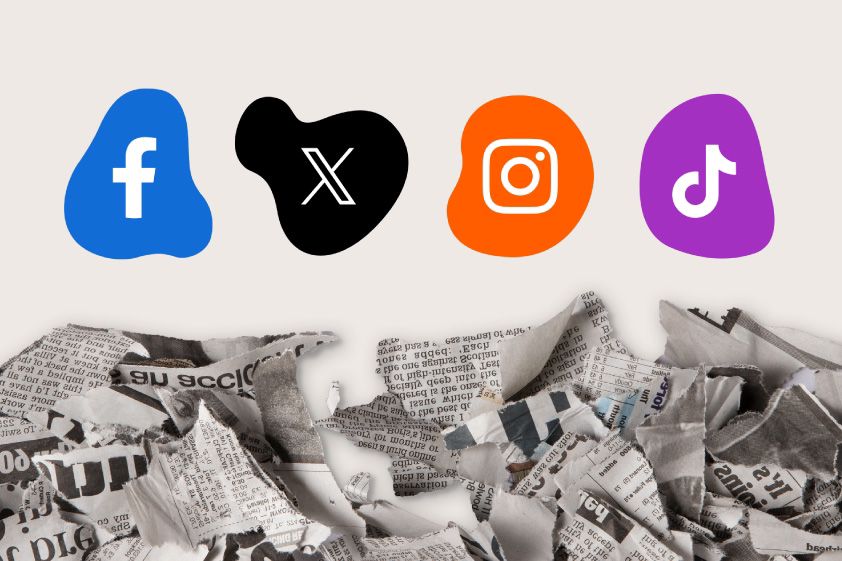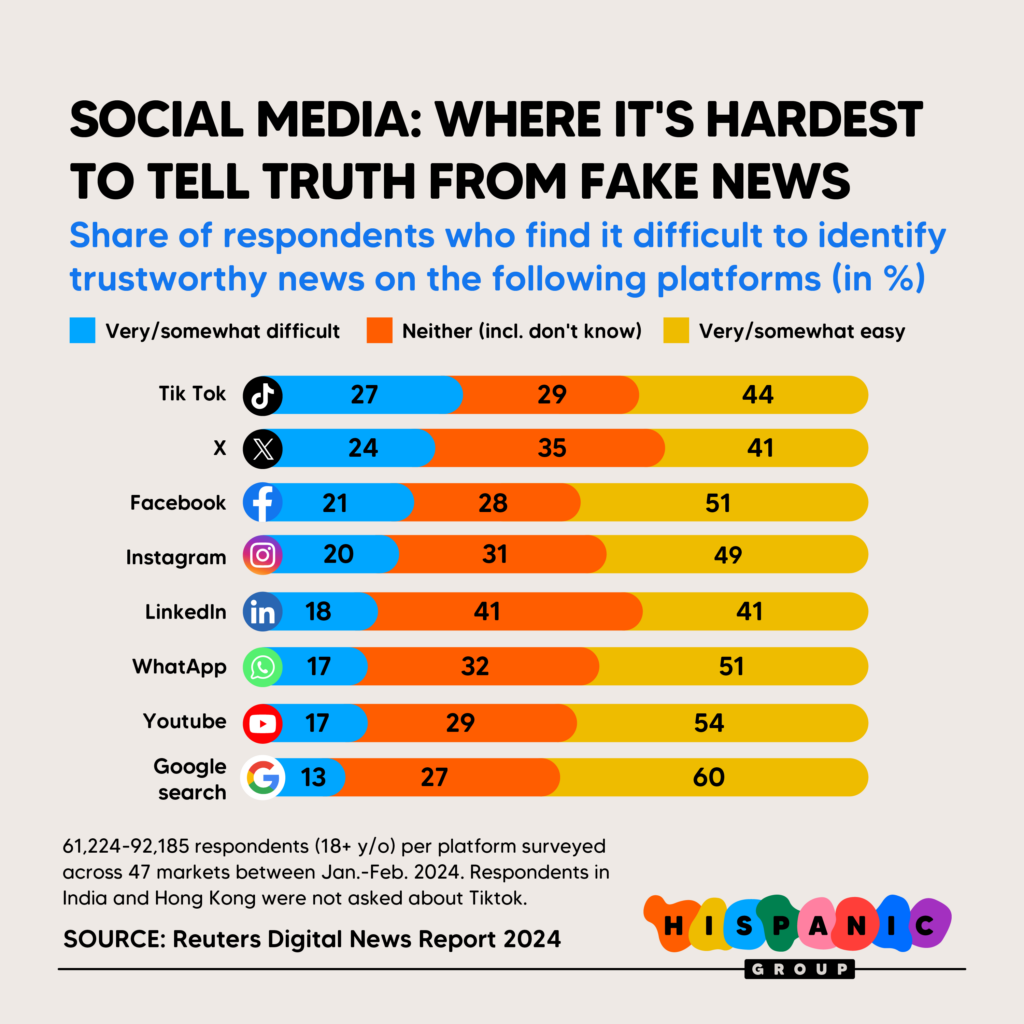NEWS Today 18/07/2024
FROM HEADLINES TO LIKES: THE ROLE OF SOCIAL MEDIA IN U.S. NEWS HABITS
 In today’s digital age, social media platforms are more than just spaces for connecting with friends or sharing selfies—they are integral parts of the American news diet. According to a comprehensive Pew Research Center survey conducted in May 2024, half of U.S. adults get news at least sometimes from social media. This statistic underscores the pivotal role platforms like TikTok, X (formerly Twitter), Facebook, and Instagram play in news consumption. However, the ways Americans encounter news on these platforms differ significantly.
In today’s digital age, social media platforms are more than just spaces for connecting with friends or sharing selfies—they are integral parts of the American news diet. According to a comprehensive Pew Research Center survey conducted in May 2024, half of U.S. adults get news at least sometimes from social media. This statistic underscores the pivotal role platforms like TikTok, X (formerly Twitter), Facebook, and Instagram play in news consumption. However, the ways Americans encounter news on these platforms differ significantly.
Key Findings:
1. X as a News Destination:
- Usage: X continues to be a prominent news destination. Around 53% of X users regularly get news from the platform, making it one of the most news-centric social media sites.
- Primary Purpose: For many X users, staying updated with news is a primary reason for using the platform, unlike other social media sites where news consumption is more incidental.
2. Incidental News Consumption:
- Facebook and Instagram:These platforms are predominantly used for social interactions. Only 10% of Facebook users and 9% of Instagram users cite keeping up with news as a major reason for their platform use. However, approximately 30% of users on both platforms encounter news often while scrolling.
- TikTok: Although just 12% of users go to TikTok specifically for news, around 33% report frequently seeing news content on the app.
3. Types of News Content:
- Opinion-Based and Humorous Content: On platforms like X and Facebook, users are more likely to encounter opinion-based or humorous content related to current events rather than traditional news articles. Specifically, 60% of X users and 55% of Facebook users see this type of content regularly.
- Traditional News:Traditional news articles or breaking news updates are less common, with only 25% of X users and 20% of Facebook users frequently seeing such content.
4. Sources of News:
- Friends and Family: On Facebook and Instagram, the primary source of news is friends and family. Fifty-five percent of Facebook users and 50% of Instagram users report getting news from these personal connections.
- Influencers and Acquaintances: TikTok stands out for its news dissemination through influencers and non-personal acquaintances, with 45% of users indicating these as their main news sources.
- Journalists and News Outlets: X is unique in its high proportion of news content from journalists and news outlets, with 40% of users citing these sources as their primary news providers.
5. Skepticism and Inaccuracy:
- Inaccurate News: Encountering inaccurate news is a common complaint among social media users. About 70% of X users and 65% of Facebook users report seeing false or misleading news stories.
- Platform Trust: Trust varies by platform, with 40% of Democrats expressing skepticism towards news on X, while 45% of Republicans show more skepticism towards news on Facebook.

Digital News Dominance:
The trend towards digital news consumption is undeniable. A significant 86% of Americans now get their news from smartphones, tablets, or computers, indicating a strong preference for digital sources over traditional media. Specifically, 58% of Americans choose news websites and apps as their main source, overshadowing TV (34%), radio (13%), and print newspapers (9%).
Platform Preferences:
While social media platforms play a significant role in news dissemination, they are not the primary news source for most Americans. Instead, 40% of U.S. adults rely on news websites or apps, and 20% use search engines for their news needs. However, social media remains a powerful tool for engaging directly with audiences, with each platform catering to different consumption habits:
- X: Preferred for up-to-the-minute news updates and professional journalism.
- Facebook and Instagram: Serve as venues for news from personal connections, blending social updates with news.
- TikTok: Unique in its influencer-driven news model, appealing to younger demographics.
Implications for News Consumption:
The survey underscores the integral role social media plays in the American news diet, with half of U.S. adults getting news from social media at least sometimes. Despite differences in platform structures, content, and culture, all four platforms serve as significant conduits for news, albeit in varied forms and from diverse sources. This diversity highlights the complexity of modern news consumption and the importance of understanding platform-specific behaviors and preferences.
In a world where headlines and likes intertwine, the ways in which we consume and perceive news are constantly changing. By staying informed about these trends, we can better appreciate the dynamic role social media plays in shaping our understanding of current events.
Sources: Pew Research Center, "How Americans Get News on TikTok, X, Facebook and Instagram" 2024

Related news
UNLOCKING SUCCESS THROUGH PARTNERSHIP: THE POWER OF A MINORITY-OWNED AGENCY ➞
In today's dynamic and interconnected business landscape, diversity and inclusivity have emerged as powerful catalysts for growth and innovation. Partnering with a minority-owned agency is not only a moral imperative but also a strategic move for companies aiming to tap into a plethora of unique perspectives, untapped markets, and unparalleled creativity. This blog post delves into the significance of collaborating with minority-owned agencies, highlighting the benefits they offer, shedding light on compliance obligations, and ultimately celebrating the transformative potential they bring to the table.
THE RISING POWER OF LATINO INFLUENCERS IN THE US MARKET- A GAME-CHANGER IN MARKETING, MEDIA, AND CORPORATE LEADERSHIP ➞
As we venture into 2024, a transformative wave is sweeping across the spheres of marketing, media, and corporate leadership, with Latino influencers leading the charge. This shift is not just a passing trend but a significant movement that's reshaping the way brands, businesses, and cultural institutions engage with an increasingly diverse audience. The active inclusion of Latinos, spearheaded by remarkable Latinas, at prestigious global forums like The World Economic Forum, Critics Choice Awards, and Sundance Festival, underscores a broader cultural awakening.
HOW HISPANIC AND LATINO ENTREPRENEURS ARE REDEFINING THE FUTURE OF TECHNOLOGY AND MEDIA ➞
As the Hispanic population continues to grow, Hispanic entrepreneurs are becoming increasingly influential in the tech and media industries. They are leveraging their cultural identity to bring new and innovative ideas to each industry, while also providing a fresh perspective to traditional business practices. Their contributions are helping to drive innovation, create new media platforms and content, and foster more diverse and inclusive cultures in the workplace. In the future, entrepreneurs will be key to the continued success of the tech and media industries, helping to shape the future of technology and media. Their creativity and influence will be essential to creating a more vibrant and dynamic industry that embraces diversity and inclusion.

Are you ready to elevate your strategy?
LET’S CONNECT


